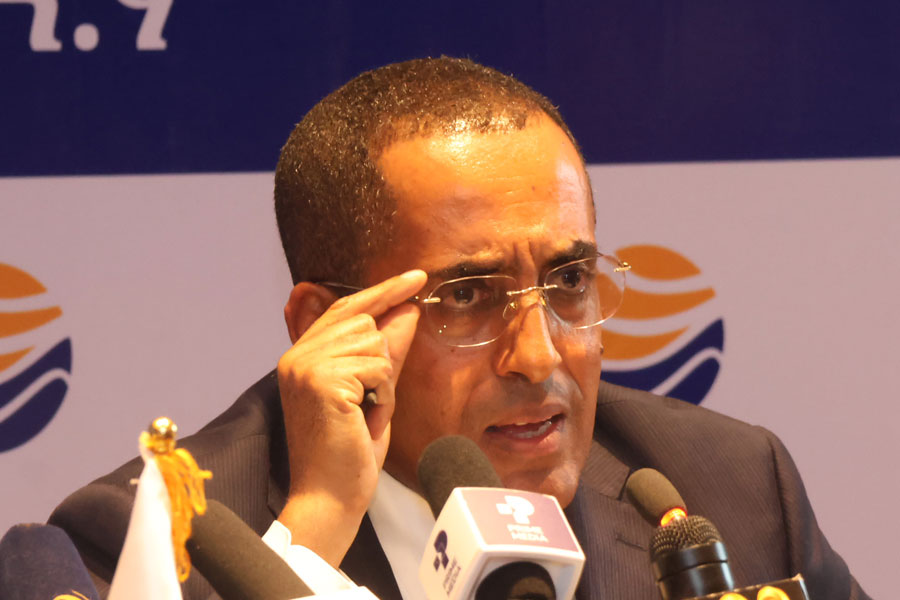
Covid-19 | Apr 01,2020
Feb 18 , 2023
By Bjorn Lomborg
In 2000, something remarkable happened: the world came together and committed to a short list of ambitious targets, which became known as the Millennium Development Goals (MDGs). The objectives — to reduce poverty, fight disease and keep kids in school — essentially boiled down to eight specific, verifiable goals, subject to a hard deadline of 2015.
Over that decade-and-a-half, governments, international institutions, and private foundations poured in billions more than they had before to achieve 21 targets within the eight goals. International development aid alone almost doubled in real terms.
Global funding for child health increased eightfold from less than an annual billion dollars in the 1990s to eight billion dollars in 2015. While we did not reach all the targets, this considerable investment unsurprisingly turbocharged progress.
More children were retained in school, and gender equality improved. Low-income countries across the world saw death rates drop much faster than before. In 1990, nearly one child in 10 died before age five. Child deaths had fallen by more than half by 2015. That adds up to almost 19 million children surviving their fifth birthday that would otherwise have died.
There was a dramatic reduction in hunger: it went from afflicting 16pc of the world’s population in 1990 to around eight percent in 2015. That meant 300 million people avoided the lifelong effects of hunger and malnutrition. And the fight against poverty was also accelerated, cutting the total number of poor by an astounding 1.2 billion people.
Thanks to the MDGs, the world has become a much better place for the poor and vulnerable. While some targets like clean drinking water and sanitation did not accelerate, all experienced dramatic improvements, making life less complicated, with less hunger, poverty and dirty water, with more schooling and less death from tuberculosis, malaria and HIV, and with mothers and children dying much less.
But in 2015, when the world replaced the MDGs, things went wrong.
World leaders could again have chosen to focus on a few crucial targets. They could have kept the same targets since they are important to the world’s most vulnerable people. We could have focused on pinpointing the deepest needs and the most significant opportunities.
Instead, the United Nations and world leaders came up with a hodge-podge, absurdly long list of 169 targets for the world to achieve in the 15 years to 2030: the Sustainable Development Goals (SDGs).
The SDGs promise to do critical things, like eradicating poverty and hunger, getting rid of diseases, and ending war and global warming. They also set targets for more peripheral issues like providing green spaces.
Having 169 targets is the same as having no priorities at all. And the inevitable result is that we are falling behind on essential development measures.
This year, we are at halftime of the SDGs. Yet, with our current progress, even before the setbacks of Covid, we will likely be half a century late on our promises.
Ethiopia is progressing better than many other countries but is still far behind the goal line. Judging by the progress made between 2015 and 2019, it is set to complete the SDGs around 2075.
We could be the generation that fails all or almost all of our promises; it is a consequence of not prioritizing.
How do we fix things from here?
We need to prioritize which targets matter most. For most people, less hunger and better education matter more than well-meaning pledges of increased recycling and global awareness of lifestyles in harmony with nature (two of the 169 targets).
We must also acknowledge that some challenges can be fixed with cheap and straightforward policies. Some cannot. Assuring peace and ending all violence, crime, and corruption is laudable, but it isn't easy to achieve. There is little knowledge of how to get there.
In contrast, we know how to fix many pervasive problems effectively at a low cost.
Tuberculosis is entirely treatable and has been so for over half a century. Yet, it still quietly kills more than 1.5 million people annually. While nine out of 10 rich country 10-year-olds can read and write, only one-in-10 can do so in the world’s poorest countries. And yearly, more than two million children and 300,000 women die during childbirth.
All these problems have practical and effective solutions. They should get our full attention. But they do not.
We will succeed when we are honest and set priorities. Let us not be the generation that just failed the global promises. Instead, let’s become the generation that does the most effective things best and first.
PUBLISHED ON
Feb 18,2023 [ VOL
23 , NO
1190]


Covid-19 | Apr 01,2020

Commentaries | May 27,2023

Agenda | Dec 28,2019

Fineline | Apr 12,2020

Radar | Apr 08,2024

Life Matters | Jun 29,2019

Life Matters | May 04,2019

Viewpoints | Feb 13,2021

Sunday with Eden | Nov 26,2022

Commentaries | Sep 16,2023

My Opinion | 131981 Views | Aug 14,2021

My Opinion | 128369 Views | Aug 21,2021

My Opinion | 126307 Views | Sep 10,2021

My Opinion | 123925 Views | Aug 07,2021

Dec 22 , 2024 . By TIZITA SHEWAFERAW
Charged with transforming colossal state-owned enterprises into modern and competitiv...

Aug 18 , 2024 . By AKSAH ITALO
Although predictable Yonas Zerihun's job in the ride-hailing service is not immune to...

Jul 28 , 2024 . By TIZITA SHEWAFERAW
Unhabitual, perhaps too many, Samuel Gebreyohannes, 38, used to occasionally enjoy a couple of beers at breakfast. However, he recently swit...

Jul 13 , 2024 . By AKSAH ITALO
Investors who rely on tractors, trucks, and field vehicles for commuting, transporting commodities, and f...

Jul 5 , 2025
Six years ago, Ethiopia was the darling of international liberal commentators. A year...

Jun 28 , 2025
Meseret Damtie, the assertive auditor general, has never been shy about naming names...

Jun 21 , 2025
A well-worn adage says, “Budget is not destiny, but it is direction.” Examining t...

Jun 14 , 2025
Yet again, the Horn of Africa is bracing for trouble. A region already frayed by wars...

Jul 6 , 2025 . By BEZAWIT HULUAGER
The federal legislature gave Prime Minister Abiy Ahmed (PhD) what he wanted: a 1.9 tr...

Jul 6 , 2025 . By YITBAREK GETACHEW
In a city rising skyward at breakneck speed, a reckoning has arrived. Authorities in...

Jul 6 , 2025 . By NAHOM AYELE
A landmark directive from the Ministry of Finance signals a paradigm shift in the cou...

Jul 6 , 2025 . By NAHOM AYELE
Awash Bank has announced plans to establish a dedicated investment banking subsidiary...